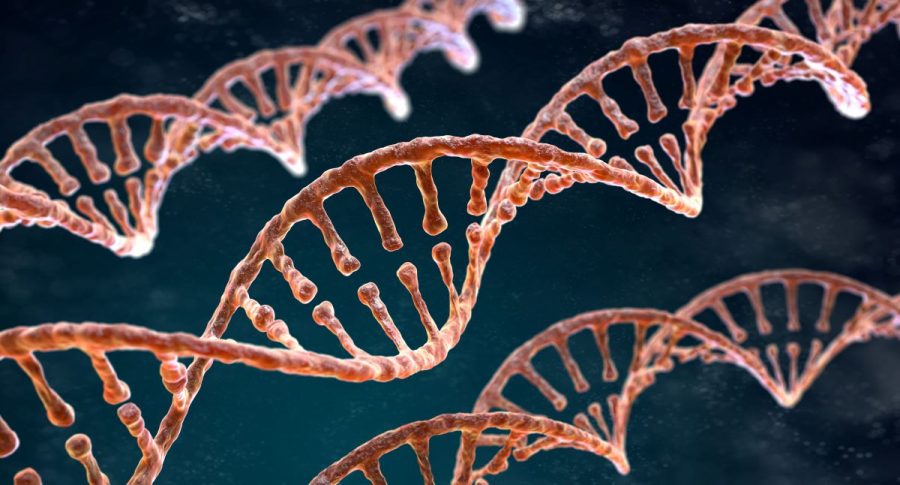Jurassic Park is remembered for many things: an incredible soundtrack composed by John Williams, remarkable dinosaur effects and surprising wisdom. The most famous piece of wisdom from Jurassic Park is, doubtlessly, from Jeff Goldbloom’s Dr. Malcolm, who stated “your scientists were so preoccupied with whether or not they could, they didn’t stop to think if they should.” In the Jurassic Park universe, this quote illuminates the dangers of unchecked innovation and the manipulation of DNA. Unlike in the movies, scientists have thus far been unsuccessful in reviving dinosaurs. Gene editing, the altering of genetic information, has become a reality for humans, though, with many raising similar criticisms of the emerging technology.
Clustered Regularly Interspaced Short Palindromic Repeats (CRISPR) are DNA sequences used to detect and eradicate viral DNA and form the backbone of a bacterial immune defense system, which has been reengineered by scientists to edit genes. Genes encode information about how living organisms function and, therefore, editing it them can trigger anything from immunity to diseases or glowing in the dark.
The gene editing technique uses CRISPR-associated protein 9 (Cas9), an enzyme which uses CRISPR DNA, as a guide for DNA slicing and is often simply referred to as CRISPR. The essential takeaways from biology for understanding CRISPR are that the observed characteristics of an organism depend upon genetic material encoded in DNA, and RNA can be useful for interacting with DNA. CRISPR works by utilizing patterns in the DNA on either side of a gene of interest to place RNA “tags,” which guide a protein to slice a gene out of a DNA sequence and the gene is subsequently destroyed. Importantly, scientists are also able to replace a removed gene with a new one, utilizing natural healing mechanisms within a cell.
Scientists will often source these new genes from other organisms, seeking to spread a characteristic from one to another. When scientists seek to apply CRISPR, they must create unique RNA tags corresponding to the start and end of a gene and, if they choose, they may also take a new gene to replace the old one. Then, once DNA is exposed to RNA tags under the right conditions, the RNA tags will attach to the DNA, via proteins, and act as a marker for the proteins to attach to before slicing out the gene. Additionally, scientists can insert new DNA without compromising existing genes via making a cut in a DNA sequence without removing actual genetic material. In essence, the CRISPR system acts like scissors and glue and alter an organism’s genetic material.
One application of CRISPR is in a gene drive. A gene drive essentially forces the offspring of a genetically modified organism to take on that modification. Along with the genetic modification, the parent individual has its DNA changed to include instructions to create the CRISPR DNA-cutting protein and guide RNA. Essentially, scientists encode DNA so that genetic modification can happen on the fly when an organism reproduces. So, instead of just producing proteins required for the organism, a cell will also synthesize the gene drive. Then, the gene drive will cut out the target gene in an organism’s other chromosome and then that chromosome repairs itself with the modified gene as a model, copying the genetic information of the gene drive; therefore, an individual which inherits a single copy of the gene drive will ultimately have two copies of the gene drive and any offspring from a parent which has the gene drive will inherit the gene drive and any genes it carries with it. So, genetic modifications could be quickly spread through a population as each successive generation has more individuals tracing lineage back to a genetically modified organism.
While many agree this would be unethical to use in humans, there are still potential applications to modifying animal populations to help protein environments and humanity. Researchers have created mosquitos which are genetically modified to resist malaria and to pass that trait through the wild population through gene drive technology. With this and mosquitos’ short lifespans, an entire population of mosquitoes could quickly become a relatively benign harm to humans. Over half of all people globally are at risk of malaria and the Centers for Disease Control and Prevention (CDC) reported there were 216 million clinical episodes and 445,000 deaths associated with malaria in 2016. Still, gene drives’ trademark feature, being able to spread to an entire wild population, is also the greatest cause of trepidation among scientists. Never before has it been possible to genetically modify organisms on such a magnitude, and ecologists fear unintended environmental impacts while ethicists argue over the authority of humans to modify the most fundamental nature of other animal species.
Another potential use for a gene drive is in fighting invasive species by creating sterile offspring. Of course, without offspring there can be no spreading of genetic material. Instead of completely removing fertility, scientists could, for example, create a gene drive which makes males of an invasive species infertile; therefore, the drive would be spread throughout a population while at the same time destroying the population it spreads through.
There also exists a very apparent and, for most, frightening use for CRISPR: human gene editing. Important applications for gene therapy exist, which could address everything from cancer to blindness. Still, there are significant ethical concerns in humans such as the He Jiankui affair in which a Chinese scientist genetically edited two twin girls’ DNA as embryos. In contrast to gene therapy, which targets existing cells as opposed to all of one’s DNA, Jiankui edited the DNA in the embryo, which means that the edited genes will exist through the body and be able to be passed on through natural reproduction. The edits themselves sound harmless: a modification of the CCR5 gene which should help protect the girls from HIV. Other scientists and ethicists, however, have pointed out how sorely thought out this was because the same modification increases influenza susceptibility and, in a British study, mortality before the age of 76.
Beyond the environment and medicine, one of the most fascinating aspects of gene editing emerging is “biohacking,” in which people take CRISPR into their own hands. Notably, a “biohacker” named Josiah Zayner founded a company which distributes information about CRISPR and kits for its use at home for a variety of experiments. While his kits claim to focus on experiments dealing with organisms like yeast, he has used CRISPR on himself in public appearances, implicitly promoting the practice. Beyond Zayner, there are other biohackers. Take, for instance, David Ishee, a dog breeder who has attempted to make puppies with a special quality: glowing in the dark.
CRISPR and gene editing certainly present compelling, life-saving and ethically controversial areas of research. We, as humans, must always work toward a future where this science is utilized for good, and precautions, regulatory or scientific fail-safes, are taken to prevent the catastrophic spread of genetic modifications. Furthermore, we must confront what constitutes a good use of this technology.
Should parents custom design their children? Should animals that pose a nuisance be eradicated? Is it our decision to make?
The answers to these questions are uncertain; however, we must have a public dialogue as this technology matures and becomes better regulated. This should happen sooner rather than later, because one thing is certain, and that is that progress will continue to be made. Hopefully, we avoid the fate of Jurassic Park.
How do you think we should regulate gene editing? Let us know in the comments below.


















































































